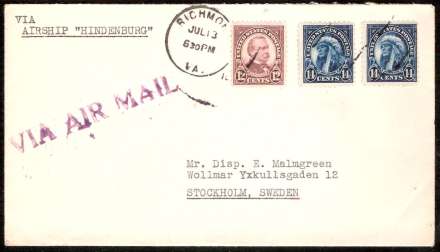The Unsoakables
I recently received an e-mail from Bob G. asking if there’s any way to remove the adhesive from “unsoakable” U.S. stamps. He writes, “Using lighter fluid separates the stamp from the envelope leaving a tacky adhesive residue.”
From what I’ve seen, I’m guessing the residue is there to stay. I’ll explain why a bit later.
Freaks of philately
“The Unsoakables,” as you could call many modern U.S. self-adhesive stamps, have sparked spirited debate and more than a few complaints from stamp collectors in recent months.
A cool bath of water used to be all it took to remove a stamp from the envelope to which it was affixed. “The Unsoakables,” however, can be immersed for hours and still refuse to come loose in a peaceful fashion. So what’s a collector to do with these pesky critters?
Your options
Several solutions have been proposed, all of which have their proponents but none of which, it seems, is the perfect answer. Among the more common suggestions:
- Soak in hot (or cold) water for an extended period—this may have worked with the traditional lick-and-stick stamps, and it certainly works with some self-adhesives, mainly those of the 1990s. But for many recent issues there’s no point; as noted before, some simply won’t come loose from the paper, while others curl up into tight scrolls with the design flaking off the face of the stamp into the water.
- Soak in lighter fluid—this may very well get the stamp off the paper to which it’s attached, but as Bob points out, it doesn't eliminate the sticky layer of gum. You now have an off-paper stamp that sticks to anything and everything with which it comes in contact. Oh yeah, and lighter fluid is flammable, which means if you’re not careful then soaking your stamps could be very exciting….
- Leave on paper—don’t bother soaking at all. Simply trim off the corner of the envelope with the stamp on it and mount it in your album. The problem here is a stamp on paper is thicker than the same stamp off paper, which means you can’t put as many pages in an album and so forth.
Obviously, each of these “solutions” has its own drawbacks. But how did we end up with this tacky, gummy mess in the first place?
A brief history
The U.S. issued its first self-adhesive postage stamp way back in 1974. That “Peace on Earth” stamp, much like its modern cousins, has caused collectors nothing but angst due in large part to its unsoakability.
When experimenting with self-adhesives in the 1980s and early 1990s, however, postal officials solved the problem. If the paper on which the stamps were printed had a water-soluble layer applied before the self-adhesive gum was added, the stamps could be soaked off the envelopes. Collectors rejoiced.
Why then, you might ask, are so many self-adhesive stamps today such a pain to handle? The answer, to put it bluntly, is money.
Trying to save a buck
Postal revenues are down. It seems like every year there’s a news article about how many millions or billions of dollars the USPS is going to lose. Rates go up, income drops even more, and the cycle continues.
While looking for ways to cut expenses, USPS officials discovered that it is cheaper to have stamps printed on paper without the water soluble layer under the gum. They save a few dollars. We stamp collectors complain, but the vast majority of USPS customers go about their daily lives blissfully unaware of what has happened.
Permanently stuck
This brings us back to the original question: is there anything that will remove the gum from the back of one of “The Unsoakables”? My short answer is that there is not so far as I know. The gum is attached directly to the paper; there’s no water-soluble layer that can be dissolved, and nothing to prevent the adhesive from taking a chunk of the stamp with it if you try to remove it.
I suspect there may be chemicals that would dissolve the gum, but my opinion is that anything powerful enough to tackle the tacky is probably going to do some serious damage to the paper itself.
One collector’s recommendation
I’ve stopped trying to soak self-adhesive stamps. While I don’t like leaving them on paper, it seems like it may be the least of the evils in this situation. The other solutions simply have too many drawbacks.
Until someone comes up with a better idea, you might consider doing the same thing. Trim off enough of the envelope paper to which the stamp is attached that it will fit in its space in your album, but don’t cut too close. Who knows—collectors of the future may want self-adhesive stamps only if there are four full margins of backing paper.
Some self-adhesive stamps are still soakable, of course. The Virtual Stamp Club indicates on its list of new issues which stamps are safe to soak and which ones are not.
What’s your opinion? Are you leaving stamps on paper or still trying to soak them off? Have you found a way to get rid of the self-adhesive goo?
